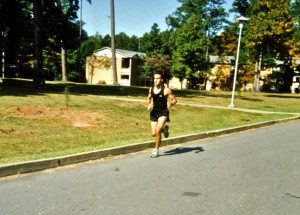 Plantar Fascitiis
Plantar Fascitiis
Plantar fasciitis is an inflammation of the band of tissue (the plantar fascia) that extends from the heel to the toes. In this condition, the fascia first becomes irritated and then inflamed-resulting in heel pain. The symptoms of plantar fasciitis are:
- Pain on the bottom of the heel
- Pain that is usually worse upon arising
- Pain that increases over a period of months.
See more information about plantar fascitiis at our website.
Stress Fracture
A stress fracture is a small crack in a bone. Stress fractures often develop from overuse, such as from high-impact sports like distance running or basketball. Clinical findings include pain over the bone, inability to bear weight, swelling, gross deformity or angulation, partial or complete loss of use or motion. Patients will need an Xrays and sometimes a bone scan to detect a stress fracture.
Sesamoiditis
Sesamoiditis is inflammation of the sesamoid bones. In humans it occurs on the bottom of the foot, just behind the large toe. There are normally two sesamoid bones on each foot; sometimes sesamoids can be bipartite, which means they each comprise two separate pieces. The sesamoids are roughly the size of jelly beans. In humans the sesamoid bones act as a fulcrum for the flexor tendons, the tendons which bend the big toe downward. Patient will need RICE and custom orthotics to help with this problem.
Compartment Syndrome
Compartment syndrome is increased pressure in one or more of the three compartments of the lower leg. This can be caused by exercise and a sudden increase of blood flow. The sheath that covers each muscle compartment will become inflammed and cause tissue compression. The sheath does not allow for expansion of the muscle and pain can occur to the nerves. If pressure is high enough causing intractable pain, pallor (cold), pulselessness, loss of musclar function, or numbness this is considered a medical emergency.
Ankle Sprain
By far the most common sports related ankle injury is the ankle sprain. There are 20,000 ankle sprains every day. Sprains are caused by stretching and/or tearing of 1 of 3 ligaments around the ankle joints. More than 50% of ankle sprains leave patients with residual symptoms. While you can accommodate for the ankle injury, activity levels are affected, especially cutting and twisting motions required for most sports. Bracing and surgery are two options that can return you to better function. We can dispense
Achilles Tendon problems
The most common Achilles tendon injuries are Achilles tendinosis and Achilles tendon rupture. Achilles tendinosis is the soreness or stiffness of the tendon, generally due to overuse. Partial and full Achilles tendon ruptures are most likely to occur in sports requiring sudden eccentric stretching, such as sprinting. The area approximately two inches above the calcaneal attachment is most susceptible to these ruptures due to a zone of avascularity.
Turf toe
Big toe injuries also called “turf toe,” often result from hyperextension of the big toe joint as the heel is raised off the ground. An external force is placed on the great toe and the soft tissue structures that support the big toe on the top are torn or ruptured.
Symptoms include pain, tenderness and swelling of the toe joint. Often there is a sudden acute onset of pain during push-off phase of running. Usually, the pain is not enough to keep the athlete from physical activities or finishing a game. This causes further injury to the big toe and will dramatically increase the healing time.
Shin Splints
Shin splints are pain to either side of the leg bone, caused by muscle or tendon inflammation (periostitis). It is commonly related to a collapsing arch, but may be related to a muscle imbalance between opposing muscle groups in the leg. This is usually caused by repetitive running on hard surfaces or forcible use of the foot flexors. RICE, NSAIDs, and orthotics are main treatments. Physical therapy and ice massage after sport activity are also helpful.

Dr. Dennis M. Timko
Podiatrist
Dr. Dennis Timko, is a podiatrist in the St. Louis, Eureka, MO. area. Dr. Timko specializes in diabetic foot care, foot surgery, AFOs, and orthotics. Dr. Timko is the solo owner of Arch City Foot & Ankle, which has been in business since 2003.
